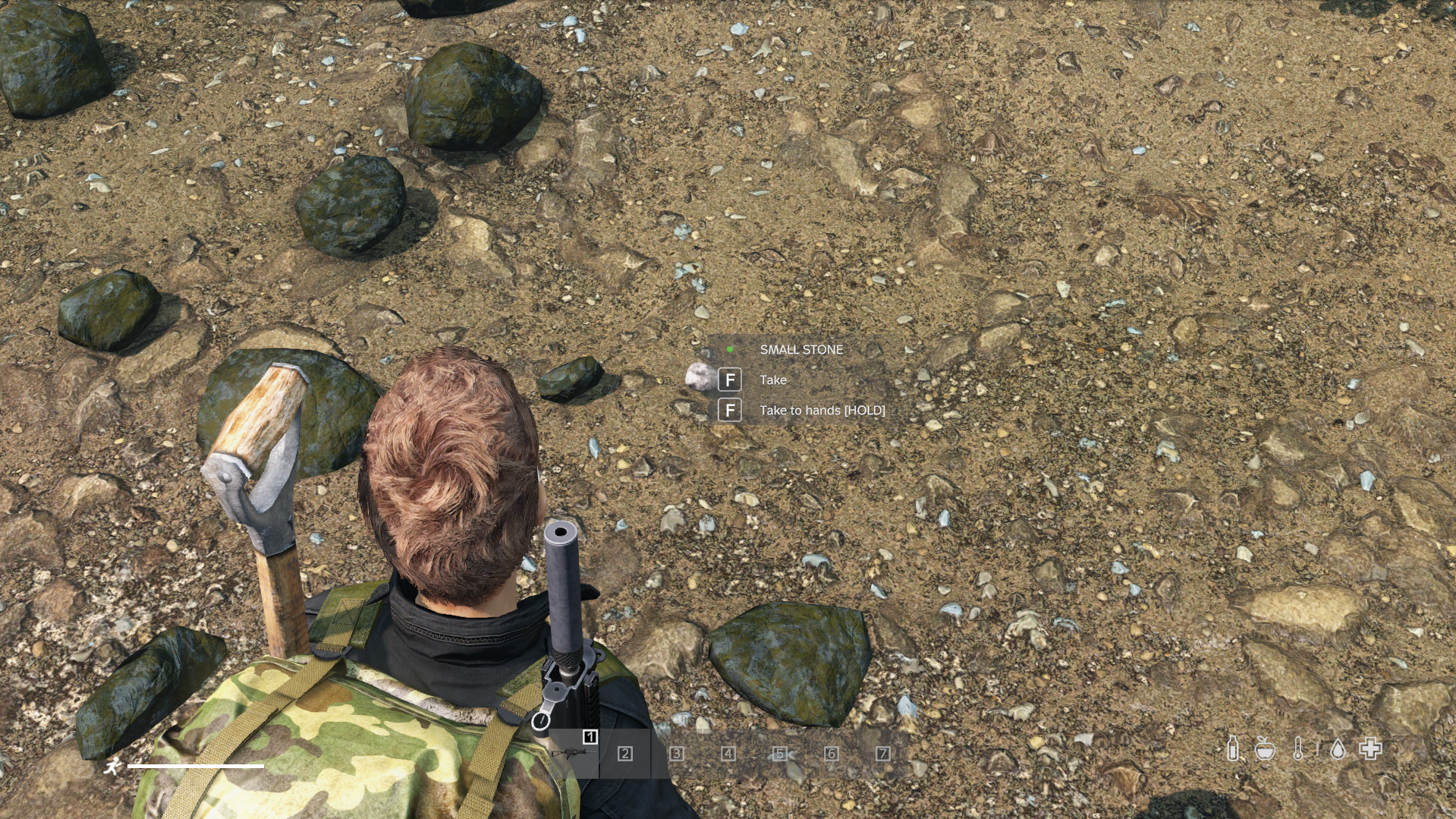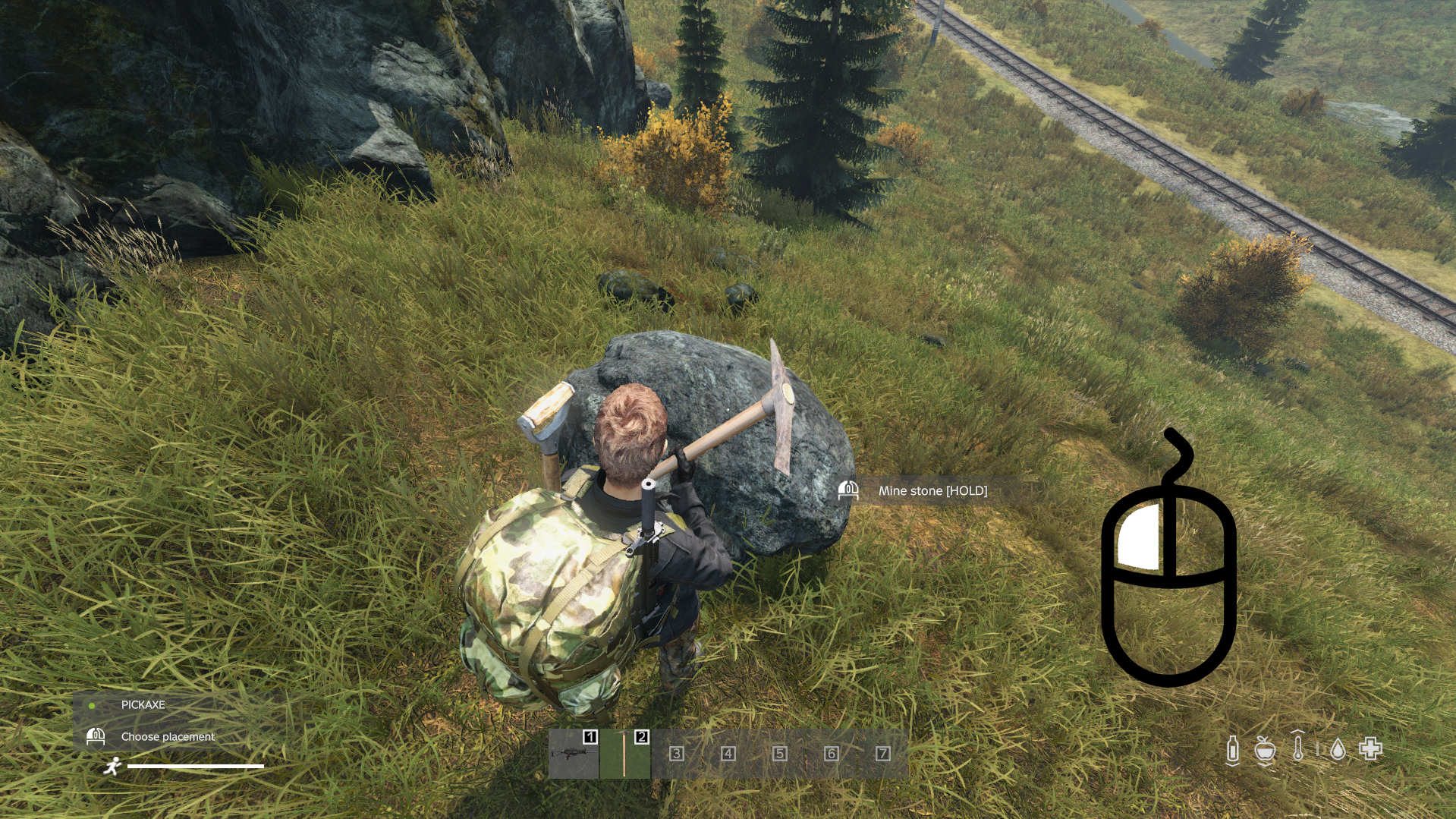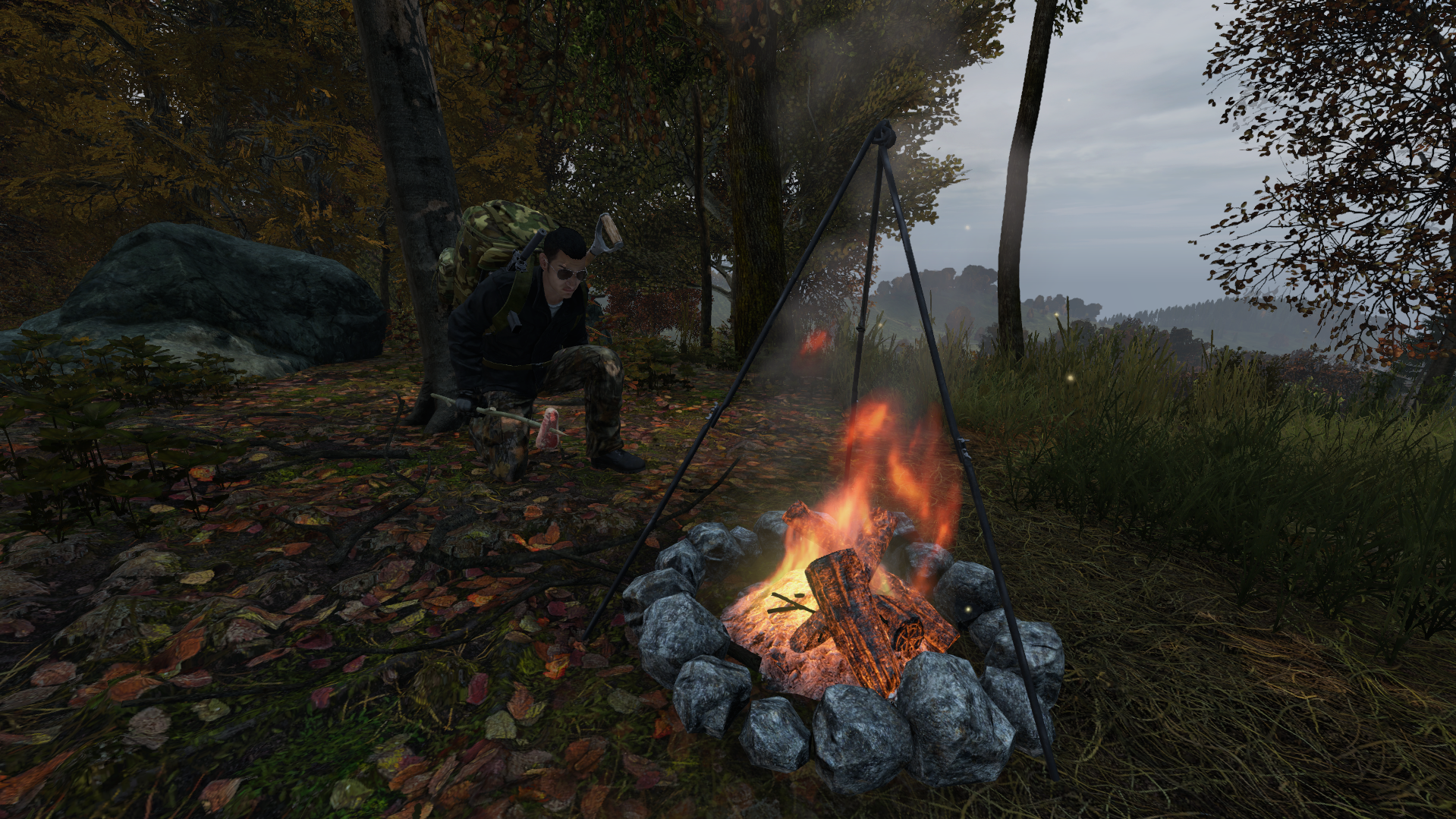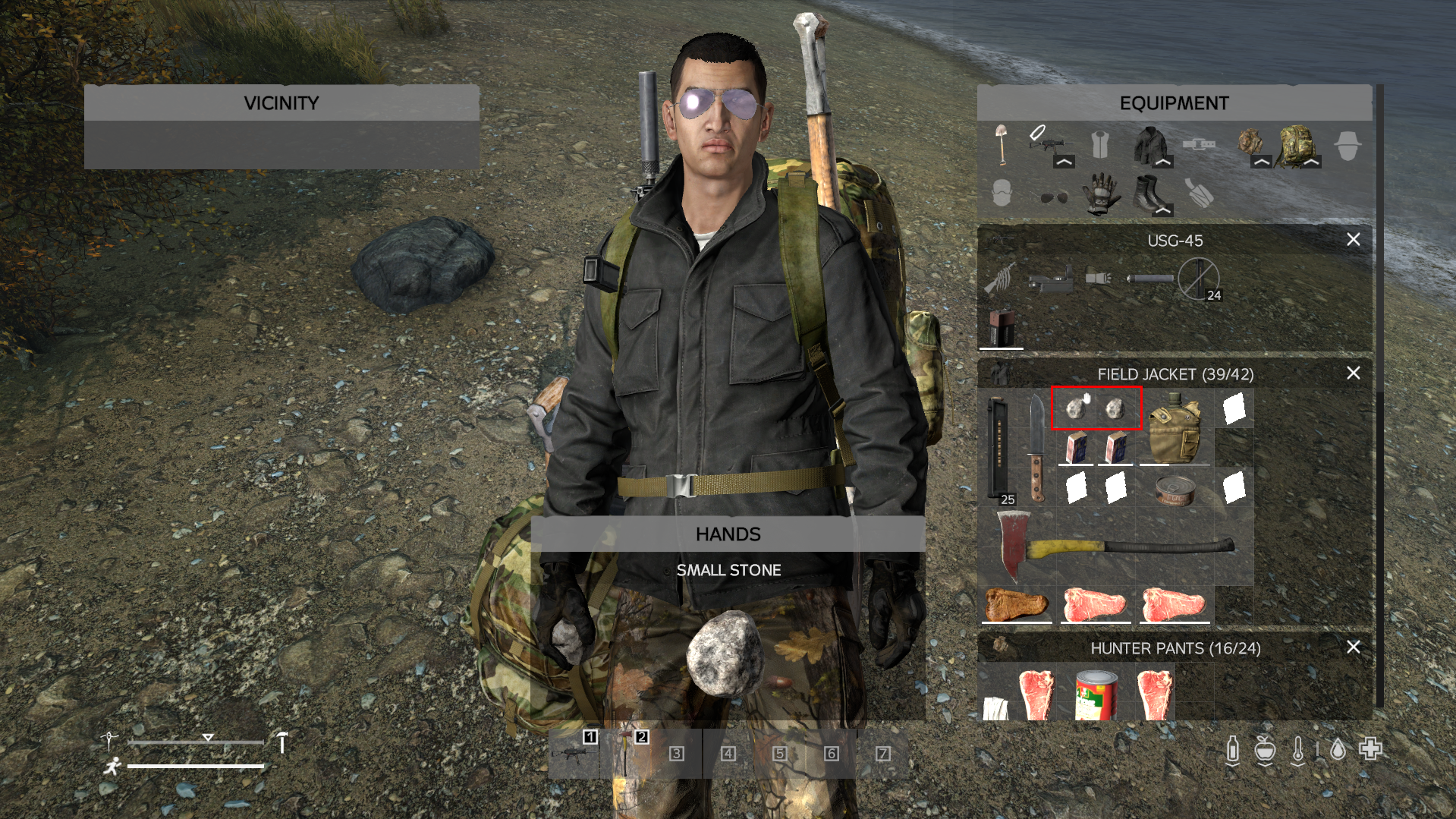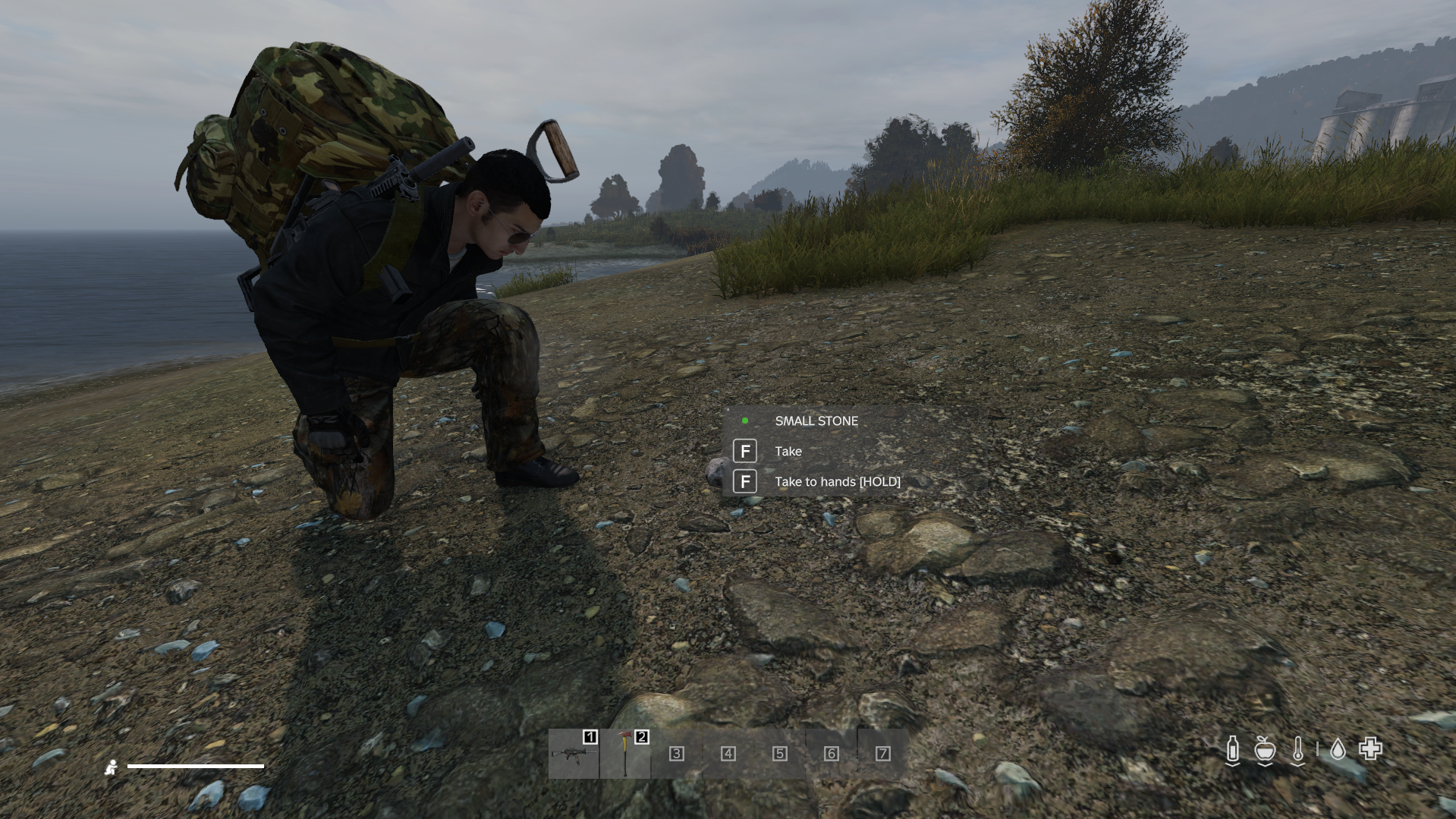Surviving in a world full of zombies isn’t easy, and you have to make use of what you can find. Stone is a resilient material you can use in DayZ, and best of all, you can find it anywhere. However, they might not be apparent to the untrained eye, especially if you need more.
Picking up the Small Stones around the game’s overworld is one way to get this resource. Yet, there are more ways to get stones in DayZ. Keep on reading to learn more.
How to Find Stones in DayZ
Stones are practically littered all over the place in DayZ. From walking around to mining boulders, you won’t run out of Stone material anytime soon. Let’s take a look at the primary ways to gather this essential material.
Picking Up Small Stones on the Ground
Reflecting the nature of our natural world, Small Stones are found in these locations:
- Nature trails

- Hiking paths

- Railways

- The rocky parts of beaches

- Stone Pits
- Quarries

In the past, obtaining Small Stones required a different process. You had to locate a rocky portion of the ground and initiate dialog. Once you did that, you would get Small Stones.
Today, the game has simplified the process for players. There’s no need to initiate the search dialog anymore.
When you explore an area, you might run into Small Stones on the ground. To gather them, follow these steps:
- Choose a location to explore, preferably one listed above.
- Walk around and look at the ground.

- If you see a Small Stone, approach it.

- Your screen will prompt you to press a key or button to pick up the Small Stone.

- Press the button or key.
- The Small Stone is now in your inventory.

Small Stones are less valuable than larger Stones. Even so, if you don’t have any, it’s advised to keep some in your inventory. You never knew when they might come in handy.
Mining Boulders
Boulders yield Stones, which are the resource you want to prioritize gathering. Stones are much more useful in DayZ, and they play an essential role in fireplace upgrades. For now, let’s focus on how to mine Boulders.
If you want to mine a Boulder, there are four tools you can use, namely:
- Pickaxe
- Sledgehammer
- Hammer
- Ice Axe
The best two among these tools are the Pickaxe and Ice Axe. You can also repair them with Sharpening Stones to make the most out of them. Conversely, Sledgehammers and Hammers break after you mine too many Boulders.
While Pickaxes, Sledgehammers, and Hammers are common, Ice Axes are rare. You’re more likely to find the first three tools in areas like villages and industrial locations. Ice Axes, however, are only found in camping spots.
Taking everything into consideration, you should try to use Pickaxes for Boulder mining instead. They’re a fair compromise between a coveted Ice Axe and a fragile Hammer or Sledgehammer.
To mine a Boulder, follow these instructions:
- Find a Boulder when you explore the area.

- Approach the Boulder.

- Equip one of the four tools for mining.

- Hold down the left mouse button or controller button to mine Stone.

- After some mining, a Large Stone will appear near your feet.

- Pick it up and keep it in your inventory.
Stones are much heavier than Small Stones, and you may have to make more trips to carry all of them to your camp. Try to bring as many as possible to reduce the number of trips required.
Splitting Large Stones
You can split Stones into Small Stones using a tool. Splitting rocks is an emergency tactic you can use if you urgently need Small Stones. All you need are a tool and a Large Stone.
Here’s how to split Stones into Small Stones:
- Drop a Stone on the ground.

- The game will prompt you to break the Stone.

- Hold the button until the progress wheel makes a full circle.

- Pick up the Small Stones around you.

It may not be as efficient or prudent to use resources this way, but consider this option if you need to make a Stone Knife quickly.
Crafting With Stones
With your Stone-gathering knowledge in mind, here’s how to put the rocks to good use. The primary purpose of this resource is to upgrade Fireplaces. Serious survivors will have one in their camp for food and warmth.
Fireplaces have a despawn timer, especially if the server restarts. Anything on the Fireplace will despawn along with it. If you have Frying Pans, Cooking Pots, and more on the Fireplace, you might have to say goodbye to them.
Upgrading your Fireplace increases the duration before it despawns. There are two upgrades available, Stone Rings and Stone Ovens.
To make a Stone Ring, you’ll need to gather eight Stones to your Fireplace. Here are the instructions:
- Gather eight Stones and bring them to your Fireplace.

- Add the Stones to the Fireplace.

- Now, your Fireplace has a Stone Ring.

- You can add a Cooking Tripod and more fuel if you wish.

After making a Stone Ring for your Fireplace, you can add eight more Stones to create a Stone Oven. Stone Ovens are even more durable than Stone Rings. You can expect your equipment to stay where you left it longer.
Making a Stone Oven goes like this:
- Approach your Fireplace.
- Press and hold the button to start crafting once you see the option to build an oven.
- Release the button when the process is complete.
- You now have a Stone Oven.
- Add any cooking equipment to the Stone Oven if you have it.

If you want to change campgrounds, you can’t pick up the entire Stone Ring or Stone Oven and place it in your inventory. The only way to take either item with you is to dismantle it. These instructions can help:
- Walk towards your Fireplace without burning yourself.
- Hold the correct button down to dismantle it.
- Once you dismantle your Stone Oven or Stone Ring, there will only be a Fireplace left.

You’ll have to build another Stone Ring or Stone Oven when you switch locations. The Stones are reusable, sparing you the effort of mining more. If they do disappear, you might have to find more Stones to replace the missing ones.
Making a Stone Knife
If you don’t have a proper tool, you can make a Stone Knife. It comes in handy in the game’s earliest stages, as you don’ spawn in with tools anymore. This change was implemented to prevent suicide.
The steps for making a Stone Knife are as follows:
- Gather two Small Stones.

- Drop them on the ground.

- Combine both to make a Stone Knife.

- Equip the Stone Knife.
While you need two Small Stones, you’ll regain one after the crafting process ends. Stone Knives work well for cutting objects and skinning animals.
Additional FAQs
Can You Destroy Rocks in DayZ?
Yes, you can destroy rocks in DayZ, specifically Boulders, and Stones. Boulders yield Stones, and Stones split into Small Stones. You need a tool for mining and splitting, though.
How Do You Upgrade a Fireplace in DayZ?
You have to mine some Boulders for Stones. Once you have at least eight, combine them with your Fireplace. Sixteen are required to make a Stone Oven, and eight for Stone Rings.
Tough Like Rocks
Getting Stones for your Fireplace will make despawning less likely. As resources and items are scarce, it’s best to have everything on hand. In addition, Stone Knives are your best tools to have in the early stages of DayZ. Whether you need a Stone Knife or a Fireplace upgrade, the required resources are all around you if you know how to look.
What’s your preferred tool for mining? Do you carry Stones with you when you relocate? Tell us in the comments section below.
Disclaimer: Some pages on this site may include an affiliate link. This does not effect our editorial in any way.






